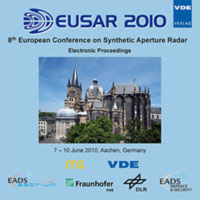A New Four-component Scattering Power Decomposition Applied to ALOS-PALSAR PLR Data Sets
Konferenz: EUSAR 2010 - 8th European Conference on Synthetic Aperture Radar
07.06.2010 - 10.06.2010 in Aachen, Germany
Tagungsband: EUSAR 2010
Seiten: 4Sprache: EnglischTyp: PDF
Persönliche VDE-Mitglieder erhalten auf diesen Artikel 10% Rabatt
Autoren:
Yamaguchi, Yoshio; Sato, Akinobu; Sato, Ryoichi; Yamada, Hiroyoshi (Niigata University, Japan)
Yang, Jian (Tsinghua University, China)
Inhalt:
A new four-component scattering power decomposition using a rotation of the coherency matrix is presented in order to distinguish vegetation and oriented urban area with respect to the direction of radar illumination in the volume scattering mechanism. It is known that oriented urban area and vegetation signatures have similar polarimetric responses and are decomposed into the same volume scattering mechanism in the decomposition. In this paper, a new decomposition scheme of first using a rotation of the coherency matrix followed by the fourcomponent decomposition is presented. It is shown using ALOS-PALSAR data sets that oriented urban areas are clearly distinguished from volume scattering as double bounce objects by the rotation of coherency matrix.


